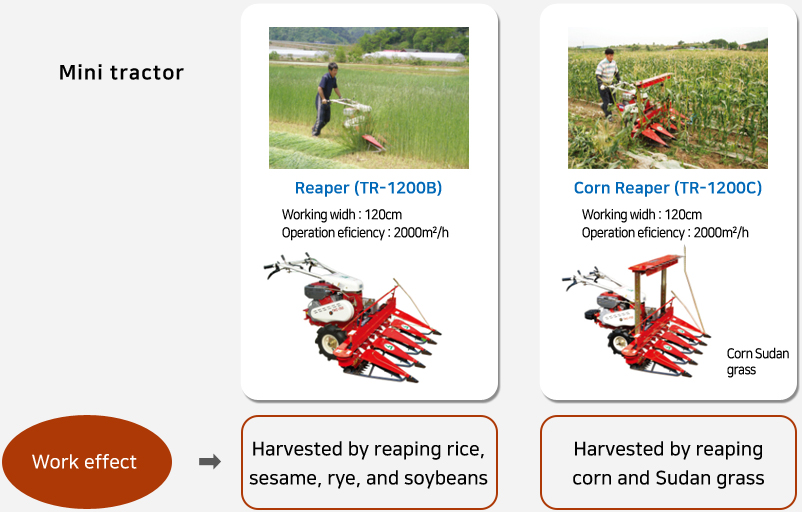Rice value chain of
innovation farming technology
We can support the sustainable climate-resilient rice farming technologies
for addressing climate change adaption
and mitigation as increasing in rice yields over 20%.
-
1.
Make strong seeds
-
2.
More 95% germination rate
-
3.
Hot water treatment for organic culti
-
4.
Rice seeding
-
5.
Sowing
-
6.
Harvest (Reap)
-
7.
Pre paddy cleaner
(SN-350CP) -
8.
Milling
-
9.
Rice sorter (Broken rice separator)
-
10.
Use of storage
PROCESS
How to increase rice production

In Korea, the recovery rate of milling based on milling is over 75%.
Achieving this yield requires a lot of skill. The most basic is the seed sorting and germination of seeds.
The germination rate of Korean rice is over 98%.
To increase rice production , it is the most basic to increase the germination rate.
(Increasing production per unit area is also a way to respond to climate change).
In particular, high production cannot be achieved by germination with green-kernelled grains,
immature grains and damaged grains. If the seeds germinate and sow strong seeds, the yield increases at harvest, and milling is easy because there is no unripe rice.
If the grain is perfect, it can be milled without far-boiling. Through education and distribution related to methods such as rice farming, seed management, storage, and milling, we increase the profits of farmers.
- Rice yields will be increased by selected strong seeds.
- Use germinator - shortening the growing period by 10-20 days.
- It helps to prevent climate change by reducing the generation of methane gas.
- Milled head rice recovery increases.
- Rice productivity increases.
- Become stronger against pests.
1.Make strong seeds
Choose healthy and strong rice seed
In Korea, 100 kg of rice is input and more than 95% of it is used as seed rice.

As the prickles adhering to the rice seeds, the are stuck to the sower machine and that makes difficult to sow equally The seeds open unequally that allows
AfterIt makes the shape of the seeds equally and precisely and sows evenly. It promotes seed production with resistance to disease and pests.
- Farmers harvest stronger seeds
- No need for farmers to purchase seeds
- Increased production per unit area
- Increased milled rice recovery based on rough rice.(about 75% in Korea)

2.More 95% germination rate
It is a device that helps rice seeds germinate for about 48 hours by pouring water and rice seeds into a bowl, supplying oxygen smoothly using the minimum time, place and labor, and maintaining the optimum temperature.
Used chemicals during germination.
4.Rice seeding

- Growing rice in a nursery after seeding - shortening the growing period by 10-20 days.
- By shortening the growing period of rice (20~30%), it helps to prevent climate change by reducing the generation of methane gas.
- To use a rice transplanting machine, we must use a seeding machine.
6.Harvest(Reap)

7.Pre paddy cleaner (SN-350CP)

- https://www.youtube.com/watch?v=ZOeazAU9sIc If you visit here, you can see videos of consumers using if.

8.Milling

- Smallholder farmers can use small mills to eat fresh rice.
- In particular, by-products of the milling process include rice husks, bran, and broken rice. In the
countryside, bran is used as manure and brazier, and husk is used as feed for livestock, and broken
rice also serves as feed for chickens and makes profits by using by-products after milling. - It is easy to install because it is more energy efficient than large rice mills.
- Consumables are cheap and maintenance costs are low.
- It functions to select stones by separating and discharging bran and husk.
- Brown rice production is possible.
9.Rice sorter (Broken rice separator)

- Pick out the broken rice.
- By selecting perfect rice, rice can be sold at a high price.
- Broken rice can be selected and commercialized to generate profits.
10.Use of storage
- Storage of rice and paddy
- It maintains its freshness and can be polished and eaten if necessary.
- Since the moisture content is maintained, the rice does not break during milling. - No need for par-boiling.(Par boiling requires a lot of labor and energy, and equipment is also expensive. After this process, the nutritional value of rice decreases.)
- Seed can be used at any time using the Seed Sorter.
- Can store meat and vegetables.






